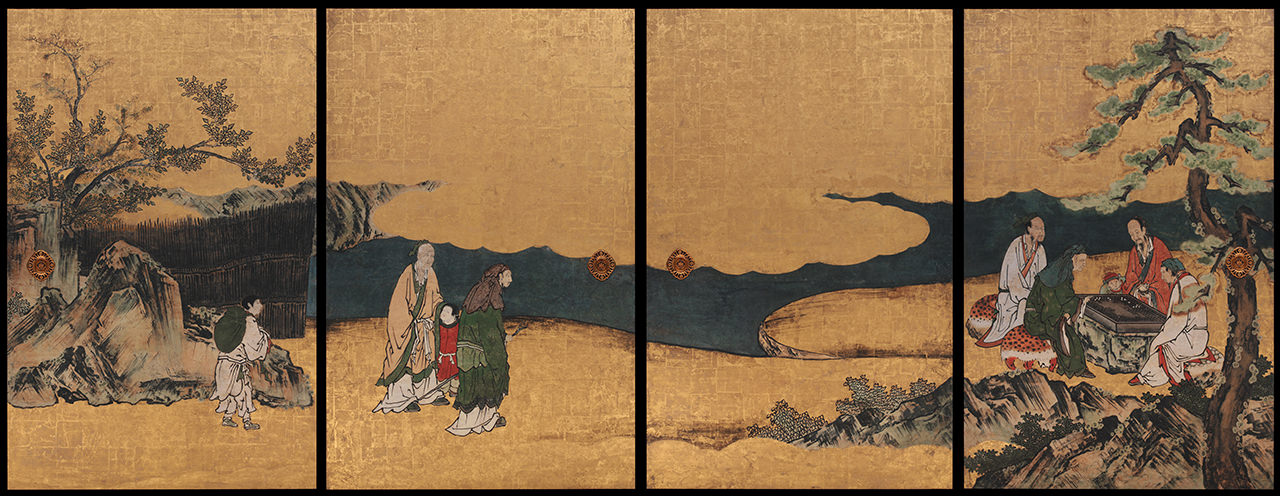A Game of Go, from the Four Accomplishments
DATA
- Artist:
- Kano school
- Historical era:
- Azuchi-Momoyama (Early 16th century)
- Material:
- printed, gold on washi paper
- Medium:
- Four sliding doors
- Theme:
- High Resolution Facsimile of Japanese Art Abroad
- Size:
- Each door H174.0 × W139.7 cm
- Recipient:
- Hanazono UniversityMAP
[Original]
- Current owner:
- Seattle Art Museum
- Material:
- ink, color and gold on washi paper
DESCRIPTION
These four sliding doors are part of a collection of 71 doors originally housed in the abbot's chamber at Ryoan-ji Temple. In the late 19th century, Ryoan-ji was in dire economic condition after the government confiscated much of its property during the movement to abolish Buddhism from Japan. The doors were sold to Ito Denemon, a coal mining mogul from Fukuoka prefecture. Ito kept the sliding doors in his residence, known as the Akagane Palace which later burned down in a fire caused by an electrical leakage. Luckily, the doors were kept in the priests' living quarters and survived this disaster. The incident led to the second relinquishment of these doors. No information exists as to what happened to the doors between 1951 and 1952. Only 21 are known to exist today: four doors depicting Liezi Rides the Wind, owned by the Metropolitan Museum of Art (includes depictions of ancient Chinese people drawn on the reverse side); the four doors shown here, A Game of Go, from the Four Accomplishments, owned by the Seattle Art Museum; and nine doors depicting Basho, owned by Robert Sowers, a British arts dealer (purchased from an antique art dealer in Kyoto). If one considers the time at which these doors were housed in Ryoan-ji, contrast between the simplicity of a dry landscape rock garden and the Kano school artist's dazzling use of brilliant colors on gold background become observable. These aspects can be considered representative of typical Zen culture.

